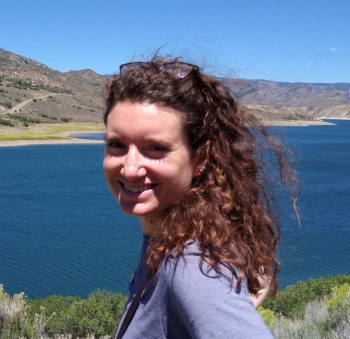
Audrey Gaudel
Research Scientist
Atmospheric Composition Modeling
NOAA Chemical Sciences Laboratory
325 Broadway, R/CSL4
Boulder, CO 80305 USA
719-286-3146
Audrey.Gaudel@noaa.gov
Affiliation
CIRES
I'm a research scientist at the Cooperative Institute for Research in Environmental Sciences (CIRES) at the University of Colorado Boulder. I have been working at the NOAA Chemical Sciences Laboratory since 2015. I did my PhD at the University Pierre et Marie Curie (aka Sorbonne University) with Gerard Ancellet in Paris, France and moved to Boulder after a first postdoctoral experience at the Laboratoire d'Aerologie with Valerie Thouret in Toulouse, France.
I have currently two main research interests:
1) Tropospheric ozone
Tropospheric ozone is a greenhouse gas and a pollutant dangerous for human health and vegetation. I am assessing distribution and long-term changes over time of tropospheric ozone and its precursors at regional and global scales.
I analyze data recorded from a myriad of in situ and remote sensing instruments such as those on board aircraft, sondes and satellites, as well as from ground/ships based instruments. I also analyze global and regional chemical and transport models output. My goal is to use the complementary information from these data sets to draw the most accurate and precise picture of tropospheric ozone in the past, present and future.
I am actively participating to the Tropospheric Ozone Assessment Report (TOAR), an activity of the International Global Atmospheric Chemistry project (IGAC).
2) Air quality
I am analyzing data from portable instruments (research grade and low cost sensors) to quantify air quality in the US at granular scale. I am looking at ozone, fine particulate matter, carbon monoxide, nitrogen dioxide, relative humidity, temperature. I compare the mobile street level data sets with satellite data and fine resolution model output.
Education
Ph.D - University Pierre et Marie Curie, Paris, France, 2013
M.S - University Pierre et Marie Curie, Paris, France, 2009
B.S - University Pierre et Marie Curie, Paris, France and one year at Queen Mary University, London, UK, 2007
Current Topics
- Distribution and changes of tropospheric ozone in the tropics using commercial aircraft measurements (European IAGOS program), satellites (TROPOMI and OMI), aircraft campaign (the global NASA aircraft campaign ATom)
- Air pollution impacting firefighters and New Yorkers
last modified: February 3, 2025

